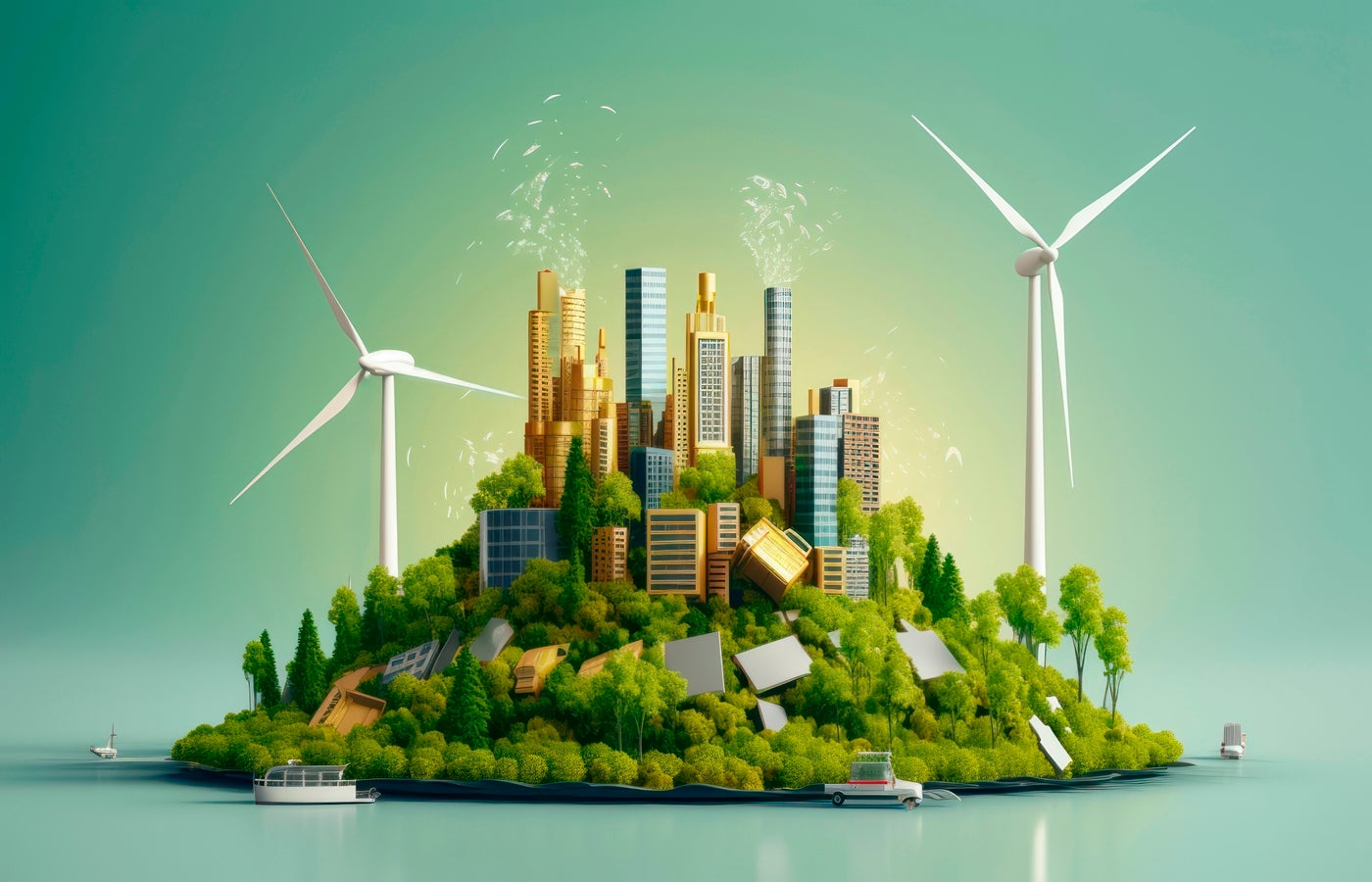All You Need to Know about Cleantech | TechRepublic
All You Need to Know about Cleantech TechRepublic


Report: Cleantech and Sustainable Development Goals

Cleantech Market Set for Expansion
As the global population grows, so does the demand for a wider array of products and services. However, this surge in demand often leads to production processes that generate increased waste, posing a significant threat to our environment.
Fortunately, cleantech, short for clean technology, offers a solution to this coming crisis. Cleantech encompasses environmentally friendly processes and systems that not only meet society’s demands but also preserve our natural environment.
ReportLinker’s Global Clean Energy Technologies Industry 2023 report revealed that the global market for clean energy technologies is forecasted to grow to $448.8 billion by 2030, showing an annual compound growth rate of 5.5%. This growth presents an opportunity to address the environmental challenges we face while meeting the increasing demand for products and services.
Understanding the Cleantech Concepts
TechRepublic Premium has put together a quick glossary of 58 fundamental concepts to help readers grasp this evolving sector. By understanding these concepts, individuals and businesses can actively contribute to achieving the Sustainable Development Goals (SDGs) set by the United Nations.
Carbon Tax
A carbon tax is imposed by governments on the carbon content of fossil fuels or the greenhouse gas emissions related to particular business activities or operations. It encourages emitters to reduce their carbon emissions by charging them a tax based on their emissions.
Decentralized Energy System
A decentralized energy system refers to a distributed energy generation and distribution network that operates independently or semi-independently from a centralized power grid. It utilizes small-scale renewable energy sources such as solar panels, wind turbines, and microgrids to provide energy to local communities or regions.
E-Waste Recycling
E-waste recycling is the process of responsibly collecting, disassembling, processing, and recycling discarded electronic devices and components to recover valuable content and reduce environmental harm. It involves recycling various forms of electronic and electrical equipment that have reached the end of their useful life or are no longer needed.
Renewable Portfolio Standard
A renewable portfolio standard is a regulatory policy that requires utilities, energy suppliers, or other related entities to produce a specified proportion or amount of their power from renewable energy sources. This policy aims to encourage the use of renewable energy, mitigate greenhouse gas emissions, and optimize energy sustainability.
Source Reduction
Source reduction is a waste management strategy that emphasizes reducing the production of waste materials from the start of the product life cycle. It involves making adjustments in product design, materials utilized, and consumption behaviors to minimize the amount and harmful effects of waste produced.
Clean Energy
Clean energy refers to energy generated from renewable sources that have minimal environmental impact. It includes solar, wind, hydro, and geothermal energy.
Eco-Labeling
Eco-labeling is a labeling system that identifies products or services that have a reduced environmental impact throughout their life cycle. It helps consumers make informed choices and encourages businesses to adopt sustainable practices.
Net Zero Emissions
Net zero emissions refer to achieving a balance between the amount of greenhouse gases emitted and the amount removed from the atmosphere. It involves reducing emissions and implementing strategies to offset any remaining emissions.
If you want to delve deeper into these concepts and contribute to a sustainable future, check out TechRepublic Premium’s 13-page quick glossary for only $19.
SDGs, Targets, and Indicators
-
SDG 9: Industry, Innovation, and Infrastructure
- Target 9.4: By 2030, upgrade infrastructure and retrofit industries to make them sustainable, with increased resource-use efficiency and greater adoption of clean and environmentally sound technologies and industrial processes.
- Indicator 9.4.1: CO2 emission per unit of value added.
-
SDG 12: Responsible Consumption and Production
- Target 12.2: By 2030, achieve the sustainable management and efficient use of natural resources.
- Indicator 12.2.1: Material footprint, material footprint per capita, and material footprint per GDP.
-
SDG 13: Climate Action
- Target 13.2: Integrate climate change measures into national policies, strategies, and planning.
- Indicator 13.2.1: Number of countries that have integrated mitigation, adaptation, impact reduction, and early warning into primary, secondary, and tertiary curricula.
| SDGs | Targets | Indicators |
|---|---|---|
| SDG 9: Industry, Innovation, and Infrastructure | Target 9.4: By 2030, upgrade infrastructure and retrofit industries to make them sustainable, with increased resource-use efficiency and greater adoption of clean and environmentally sound technologies and industrial processes. | Indicator 9.4.1: CO2 emission per unit of value added. |
| SDG 12: Responsible Consumption and Production | Target 12.2: By 2030, achieve the sustainable management and efficient use of natural resources. | Indicator 12.2.1: Material footprint, material footprint per capita, and material footprint per GDP. |
| SDG 13: Climate Action | Target 13.2: Integrate climate change measures into national policies, strategies, and planning. | Indicator 13.2.1: Number of countries that have integrated mitigation, adaptation, impact reduction, and early warning into primary, secondary, and tertiary curricula. |
Analysis
1. Which SDGs are addressed or connected to the issues highlighted in the article?
The issues highlighted in the article are connected to SDG 9: Industry, Innovation, and Infrastructure, SDG 12: Responsible Consumption and Production, and SDG 13: Climate Action.
2. What specific targets under those SDGs can be identified based on the article’s content?
Based on the article’s content, the specific targets identified are:
- Target 9.4: By 2030, upgrade infrastructure and retrofit industries to make them sustainable, with increased resource-use efficiency and greater adoption of clean and environmentally sound technologies and industrial processes.
- Target 12.2: By 2030, achieve the sustainable management and efficient use of natural resources.
- Target 13.2: Integrate climate change measures into national policies, strategies, and planning.
3. Are there any indicators mentioned or implied in the article that can be used to measure progress towards the identified targets?
Yes, there are indicators mentioned in the article that can be used to measure progress towards the identified targets:
- Indicator 9.4.1: CO2 emission per unit of value added can measure progress towards Target 9.4.
- Indicator 12.2.1: Material footprint, material footprint per capita, and material footprint per GDP can measure progress towards Target 12.2.
- Indicator 13.2.1: Number of countries that have integrated mitigation, adaptation, impact reduction, and early warning into primary, secondary, and tertiary curricula can measure progress towards Target 13.2.
Behold! This splendid article springs forth from the wellspring of knowledge, shaped by a wondrous proprietary AI technology that delved into a vast ocean of data, illuminating the path towards the Sustainable Development Goals. Remember that all rights are reserved by SDG Investors LLC, empowering us to champion progress together.
Source: techrepublic.com

Join us, as fellow seekers of change, on a transformative journey at https://sdgtalks.ai/welcome, where you can become a member and actively contribute to shaping a brighter future.







